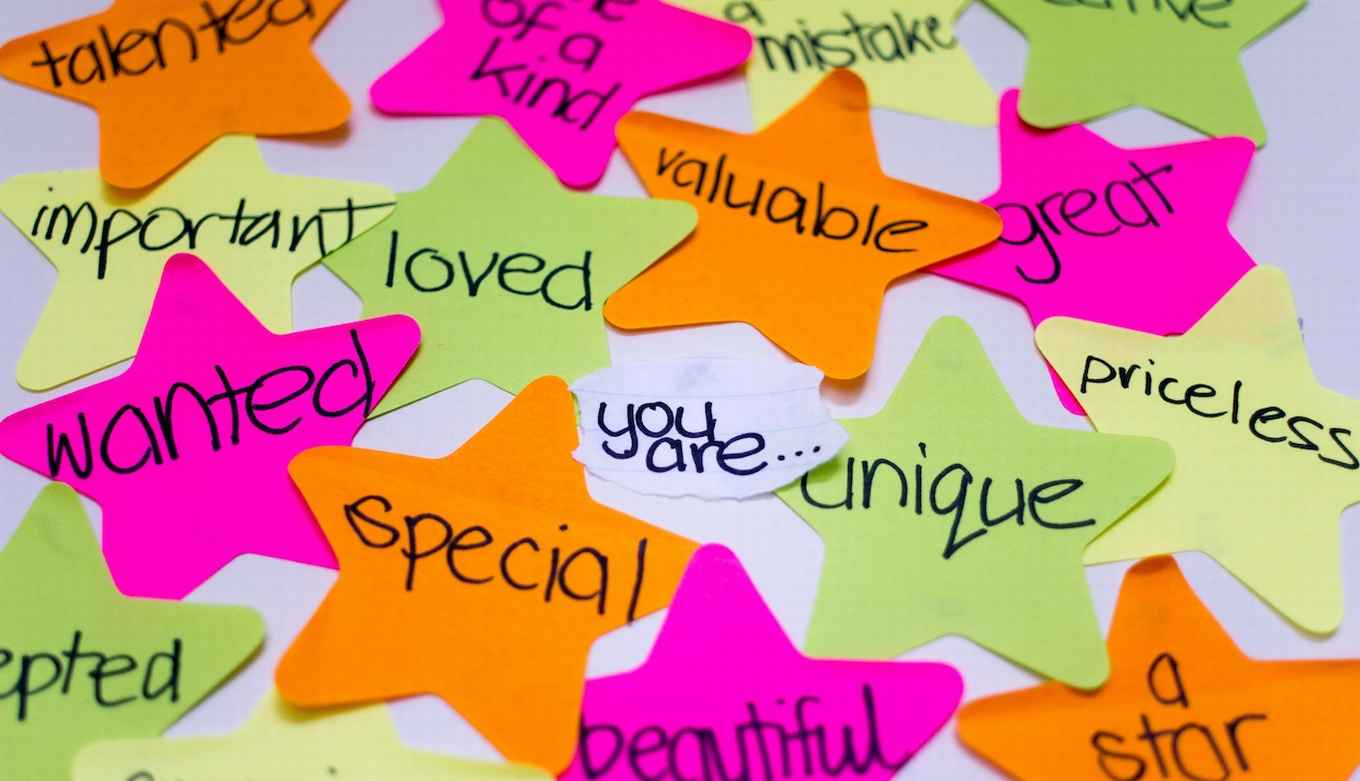How do children construct views of themselves?
28 september 2017

In a series of articles, now available online in ‘early view’,’ the researchers share the results of research on the origins of the self-concept in children.
Who am I and what is my place in the world? Children are born without an answer to these pressing questions. As they grow up, though, they start to formulate answers seemingly effortlessly. Within a few years, they recognise themselves in the mirror, refer to themselves by their own name, evaluate themselves through the eyes of others and understand their standing in a social group.
Research by Christina Starmans from the University of Toronto shows that even toddlers have an idea of what it means to have a ‘self’. Young children see the self as something that is unique to a person, separate from the body, stable over time, and located within the head, behind the eyes. Research by Andrei Cimpian (New York University) and his colleagues shows that even toddlers have the cognitive ability to form self-worth (i.e., how satisfied they are with themselves as individuals).
Social relationships
Over time, pronounced individual differences arise in children’s self-concept. Some children like themselves, whereas others feel negatively about themselves. Some children see themselves as superior and deserving special treatment, whereas others consider themselves to be on an equal plane with others. Some children believe they can grow and build their abilities, whereas others believe their abilities are fixed and unchangeable. Where do these individual differences come from? What leads children to see themselves the way they do? ‘Surprisingly little is known about the origins of children’s self-concept’, says Brummelman. ‘It is important that we shed more light on this important subject. With this collection of articles, our aim is to showcase emerging research on this subject.’
‘What these articles reveal is that children form their self-concept, at least in part, based on their social relationships’, Brummelman continues. For example, research by Michelle Harris (University of California) and her team shows that children develop higher self-esteem when they receive warmth from their parents. Warm parents show an interest in their children’s activities and share joy with them, which makes children feel noticed and valued. Brummelman’s own research shows that children may develop lower self-esteem and sometimes even narcissism when their parents give them lots of extremely positive, inflated praise, such as ‘Wow, you did incredibly well! Such inflated praise may give children a sense of grandiosity but at the same time also make them worry about falling short of the standards set for them.
Encouragement
Previous research has shown the importance of having a growth mindset – the belief that you can develop your skills through effort and education. Children with a growth mindset are eager to take on challenges, persist when the going gets tough, and see failure as opportunities for growth. In a theoretical article, Kyla Haimovitz and Carol Dweck (Stanford University) describe how parents can foster a growth mindset by praising children for effort instead of ability (for example, ‘You worked so hard!’) and by teaching children that failure isn’t harmful but actually benefits learning and growth. Parents can encourage children to ask themselves: why did I get such a low grade, and what can I do differently in future?
All 10 articles in the special section study various dimensions of children’s self-concept, including self-esteem, self-compassion, mindsets and self-perceived ability. ‘What these articles show is that children construct their self-concept based on the social relationships they have, the feedback they receive, the social comparisons they make, and the cultural values they endorse. This underlines the deeply social nature of children’s self-concept’, says Brummelman.
Publication details
Editorial: Brummelman, E., & Thomaes, S. (2017): ‘How children construct views of themselves: A social-developmental perspective’, in: Child Development (advance online publication). http://doi.org/10.1111/cdev.12961
Special Section ‘Origins of Children’s Self-Views’, edited by Brummelman & Thomaes, with contributions by:
- A.I. Becht, S.A. Nelemans, M. Van Dijk, S.J.T. Branje, P.A. van Lier, J.J.A. Denissen & W.H.J. Meeus (2017): ‘Clear self, better relationships: Adolescents’ self-concept clarity and relationship quality with parents and peers across five years’, in: Child Development (advance online publication). http://doi.org/10.1111/cdev.12921
- E. Brummelman, S.A. Nelemans, S. Thomaes & B. Orobio de Castro (2017): ‘When parents’ praise inflates, children’s self-esteem deflates’, in: Child Development (advance online publication). http://doi.org/10.1111/cdev.12936
- A. Cimpian, M.D. Hammond, G. Mazza & G. Corry (2017): ‘Young children’s self-concepts include representations of abstract traits and the global self’, in: Child Development (advance online publication). http://doi.org/10.1111/cdev.12925
- K. Haimovitz & C.S. Dweck (2017): ‘The origins of children’s growth and fixed mindsets: New research and a new proposal’, in: Child Development (advance online publication). http://doi.org/10.1111/cdev.12955
- M.A. Harris, M.B. Donnellan, M. Garnier-Villareal, J. Guo, D.P. McAdams & K.H. Trzesniewski (2017): ‘Parental co-construction of 5–13-year-olds’ global self-esteem through reminiscing about past events’, in: Child Development (advance online publication). http://doi.org/10.1111/cdev.12944
- G.P. Knight, G. Carlo, C. Streit, & R. White (2017): ‘A model of maternal and paternal ethnic socialization of Mexican American adolescents’ self-views’, in: Child Development (advance online publication). http://doi.org/10.1111/cdev.12939
- C. Lapan, & J.J. Boseovski (2017): ‘When peer performance matters: Effects of expertise and traits on children’s self-evaluations after social comparison’, in: Child Development (advance online publication). http://doi.org/10.1111/cdev.12941
- D. Peter & H. Gazelle (2017): ‘Anxious solitude and self-compassion and self-criticism trajectories in early adolescence Attachment security as a moderator’, in: Child Development (advance online publication). http://doi.org/10.1111/cdev.12926
- C. Starmans (2017): ‘Children's theories of the self’, in: Child Development (advance online publication). http://doi.org/10.1111/cdev.12951
- S. Thomaes, E. Brummelman & C. Sedikides(2017): ‘Why most children think well of themselves’, in: Child Development (advance online publication). http://doi.org/10.1111/cdev.12937